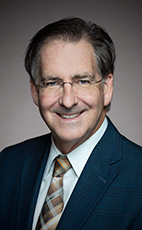44th Parl. 1st Sess.
October 25, 2023 02:00PM
- Oct/25/23 6:03:48 p.m.
- Watch
Madam Speaker, I suspect that if you were canvass the House, you would find unanimous consent to call it 6:44 p.m. so we can begin private members' hour.
30 words
- Hear!
- Rabble!
- add
- star_border
- share
- Oct/25/23 6:03:57 p.m.
- Watch
Is it agreed?
Some hon. members: Agreed.
7 words
- Hear!
- Rabble!
- add
- star_border
- share
- Oct/25/23 6:05:53 p.m.
- Watch
moved:
That:
(a) the House recognize that an assessment by the International Association of Fire Fighters concluded significant regulatory shortfalls concerning emergency responses at Canada's major airports are needlessly putting the safety of the flying public at risk, by
(i) failing to specify rescue as a required function of airport fire fighters,
(ii) requiring only that fire fighters must reach the mid-point of the furthest runway in three minutes rather than all points on operational runways within that time period; and
(b) in the opinion of the House, the government should, without delay, ensure that the Canadian Aviation Regulations reflect airport rescue and firefighting standards published by the International Civil Aviation Organization, specifically by
(i) giving fire fighters at Canada's major airports the mandate and resources necessary to reach the site of a fire or mishap anywhere on an operational runway in three minutes or less,
(ii) specifying that a required function of fire fighters be the rescue of passengers.
He said: Madam Speaker, the purpose of Motion No. 96 is to close what many, especially who know the fire and rescue profession, see as significant and dangerous gaps in the ability to respond effectively to aircraft accidents at major Canadian airports.
Motion No. 96 calls for the Government of Canada to close these gaps by amending the Canadian aviation regulations to bring them in line with standards published by the International Civil Aviation Organization, a United Nations agency headquartered in Montreal.
Specifically, closing the safety gap involves three measures: including rescue as well as firefighting in the mandate for firefighters at Canada's major airports; mandating a response time of no more than three minutes for fire rescue equipment to reach any point on an operational runway; and specifying the number of personnel required to meet fire rescue standards.
People have been raising attention to the lack of a rescue mandate for at least 25 years. The April 1 edition of Fire Engineering reported a Department of National Defence document quoting an item in the Canadian Press, suggesting “firefighting standards at civilian airports in Canada aren't up to snuff and may even put lives at risk”. The report draws attention to life-threatening dangers faced by occupants of aircraft who are not able to walk away from a wreck because Transport Canada only requires airport firefighting crews to assist in rescue outside the craft. The DND reported that the primary responsibility for rescue from inside the craft is left to the airline's flight crews and local fire departments. I will say more on that a bit later.
In its 30th Canadian legislative conference, held in Ottawa at the end of March, the International Association of Fire Fighters raised the issue again. This time, we in Parliament have an opportunity to respond and close the gaps.
Transport Canada's standard 323 in its Canadian aviation regulations states, “an aircraft fire-fighting service is a contingent resource tasked with the primary responsibility of providing a fire free egress route for the evacuation of passengers and crew”.
Section 323.03, on general requirements, adds:
This standard is not intended to limit the fire-fighting service from providing services in addition to that of aircraft fire-fighting at the airport or aerodrome, nor to prevent it from dealing with other occurrences.
Some I have spoken to reflected that firefighters can be assigned other duties while on shift, such as cutting the grass, that could well increase the turnout time for a call. Regardless, the reality at most of Canada's major airports is that fire crews do not have the personnel or, perhaps, even the training or equipment to step beyond this basic mandate, which is now limited to fighting the fire, trying to keep an escape route open and hoping that whoever is inside the aircraft can make it out.
Transport Canada's outline of the requirements to comply with the current Canadian aviation regulations focuses on fire extinguishing agents and the testing of the equipment needed to ensure the correct discharge rate and the reach the foam can get to when out fighting a fire. The section on training of personnel focuses almost exclusively on responding to an aircraft fire, with one reference to emergency aircraft evacuation assistance. If this measure refers to anything more than keeping open an escape route through the flames, the reality of staffing makes it only aspirational at some, if not most, Canadian airports. In discussions with the firefighters association, I was told that the staffing requirements on a rig dispatched to extinguish a fire is two firefighters: One drives and assists the second firefighter to discharge the foam.
If firefighters are charged with the additional mandate to rescue aircraft occupants from inside the craft, I am told that they would almost certainly need to rely on the two-in, two-out rule: If personnel are sent into any burning structure, there must be at least two firefighters outside to be there if it becomes necessary to rescue their colleagues inside.
We cannot ask firefighters to risk their lives, as they most certainly do when they go in to rescue people, without the support and backup needed if things go terribly wrong. A two-person response team today would then become maybe four, six or more. Bolstered fire hall complements, plus any necessary equipment and rescue training, would all be necessary to bring the Canadian aviation regulations up to ICAO standards.
A number of us in this place are exposed to the broadest range of risks when we fly to and from our ridings to be here for our parliamentary duties and to go back home and help our constituents, and I am one of them.
An assessment of the fire and rescue capabilities in Canada puts Vancouver International Airport at, or near, the top. That is where I usually originate my trips to come to Ottawa. In 2022, YVR recorded 230,162 runway movements and passenger counts of over 19 million. This is a lot, though it is still far short of the prepandemic total of 25.9 million passengers, but it is quite likely that volume will be reached and exceeded relatively soon. I would estimate, judging from the passengers I see at YVR, that this year will probably see the old level reached quite handily. I am told that the Vancouver Airport Authority has voluntarily adopted standards that meet or are very close to the ICAO standards.
At the other end of the journey for most MPs from metro Vancouver, we have the Ottawa International Airport. It is cited by the IAFF as one of the most challenged in meeting ICAO standards. In preparation for today, I reviewed the “YOW 2038 Master Plan”. I looked through it, and currently, there does not appear to be any provision in that plan to close any kind of a fire rescue gap.
I am told Pearson airport in Toronto is close to meeting the higher standards, and most Canadian airports, at least the 25 to 30 larger airports with more than 180,000 enplaned or deplaned passengers per year that are subject to the Canadian aviation regulations, face greater challenges than Vancouver or Toronto.
The second gap is the response time to an incident. The ICAO standard is three minutes for a fire rescue response to any point on an operational runway. I am told the Canadian standard is three minutes to the midpoint of any operational runway.
Let us have another look at the Ottawa airport. The fire hall is located very close to the end of its longest runway, which runs north-south and is 3,049 metres long. Current regulations require firefighters to reach the midpoint in three minutes, and I am told that they can do that in just under three minutes. However, it would be a challenge for them, if we are looking at a worst-case scenario of four minutes or five minutes for a crew to receive an alarm, turn out and reach an incident at the farthest end of that longest runway. I have not been able to find any records on YOW's actual performance in exercises or incident responses, but a resource here with us this evening has said that they can do the three minutes. Beyond that, it is pretty dodgy.
By the way, when we talk about meeting the standards, we should not for an instant doubt the dedication and professionalism of the firefighters. The focus here is on enabling them to meet high standards efficiently and, above all, safely.
Ottawa's airport is one of those ones that relies on the aircrew on board a burning aircraft to get the people to the door and outside, where the current regulation says that the fire department has to keep a pathway clear so that the people can get away from the aircraft. If it is to be fire rescue, they have to rely on the Ottawa civic firefighting service. The fire hall on McCarthy Road is nine driving minutes from the airport, and the hall on Leitrim Road is 11 minutes away. That is driving time. That does not count the turn-out time or getting the person out of the back or wherever they happen to be when the alarm comes in.
To the extent that Canadian airports have been designed like YOW, it could very well be that meeting ICAO's response time would require the relocation of fire halls. As I mentioned, the fire hall at YOW is at just about the end of the longest runway. That leads to the issue of costs, of course. In a 2003 regulatory impact analysis statement, the definition of “rescue” was specifically drafted, “to ensure that the status quo will be unchanged with the types of activities included as aircraft rescue and fire-fighting services” without imposing any additional obligations or costs.
Let us think about that for a moment. In these times, when passengers pay a surcharge of, let us say, $12 a ticket for security costs and $35 or more, in fact, in airport improvement fees, the IAFF suggests that an additional surcharge of 50¢, a dollar or, in the case of a smaller airport, maybe two, three, four or five dollars might be necessary to fund the lifting of services up to the ICAO standards. Canadians love to travel, especially by air. I certainly see a lot of evidence of that here in Ottawa or in Toronto, which I go through. I occasionally see it in Montreal and certainly at YVR. Those airports are jammed. I am seldom on an aircraft that has any empty seats. In spite of the narrative that says the country is broke and nobody can do anything, there sure seems to be a lot of money around for air travel these days. Therefore, we have to wonder whether maybe a few bucks per ticket to bolster the ability of aircraft passengers and crew to survive an accident at Canada's key airports is really too much to ask. Of course, the proposition here is no.
In preparing for this debate on Motion No. 96, I have been inspired by the hon. member for Longueuil—Charles-LeMoyne, whose private member's bill, Bill C-224, which we passed unanimously, has paved the way for a national framework to raise awareness of cancers linked to firefighting and to improve access to cancer prevention and treatment. When it appeared I had this opportunity, she was the first to promote resolving the regulation gaps as an important, worthy and complementary initiative, one that could support our firefighters even further by delivering critical safety improvements for air crews, air passengers and, yes, firefighters too. I would like to thank the Library of Parliament and our legislative assistant Riley Sutton for their assistance in researching this issue. I would also like to thank, of course, the International Association of Firefighters and firefighters from the Ottawa airport, who are helping to keep this issue alive.
I am now looking forward to hearing the perspective of our colleagues, because when Motion No. 96 came out, we received notes from members of the other party asking what it was all about. We provided the information we had, and I know they have been doing their own research and will be in a position to maybe expand on some of the points I have been able to raise this evening. Therefore, I will be very pleased to cede the floor to questions if there are any and certainly to my colleagues to expand on the need for Motion No. 96.
2121 words
All Topics
- Hear!
- Rabble!
- add
- star_border
- share
- Oct/25/23 6:19:02 p.m.
- Watch
Mr. Speaker, my question for the hon. member proposing the motion and the change is this: Does he think this maybe should have gone through a more regular process, perhaps have been brought to the Standing Committee on Transport, Infrastructure and Communities for a discussion so the various affected parties could weigh in on it?
55 words
- Hear!
- Rabble!
- add
- star_border
- share
- Oct/25/23 6:19:29 p.m.
- Watch
Mr. Speaker, definitely I think so. I think this is a first step. This is a catalyst that could get that kind of discussion taken up at the transport committee, which would have an opportunity to dig into the details. This is what we need to accomplish, in my view. The “how” part is definitely necessarily a focus of conversation among the members of the House who are charged with delving deeper into the issue.
77 words
- Hear!
- Rabble!
- add
- star_border
- share
- Oct/25/23 6:20:04 p.m.
- Watch
Mr. Speaker, I must say that I love my work, because every day I learn something new on a variety of topics. I think that as MPs, we have an extraordinary opportunity here. The motion we are studying is a fine example of that. It is quite simple: We want to allow firefighters to have access to every possible runway in less than three minutes. Everyone likes firefighters and everyone appreciates them.
Obviously we support this motion. My only problem is that I have to wonder why we are once again asking the person buying the plane ticket to pay for this. Why can we not manage this in some other way than through this motion?
116 words
All Topics
- Hear!
- Rabble!
- add
- star_border
- share
- Oct/25/23 6:21:10 p.m.
- Watch
Mr. Speaker, I would be prepared to pay for that gentleman. I think it is important. I like him, and I want him to get here safe and sound. However, the fact is that this is another part of the how.
We have a really good fix on what needs to happen. To the earlier question from my colleague across the way, there will be opportunities to really delve into this. “Who should pay?” is always going to be a question and “How much?” too, because that will change depending on the size of the airport and the number of passengers going through. However, if we all agree that it should happen, then how it happens becomes a step that will not be that hard to take.
131 words
All Topics
- Hear!
- Rabble!
- add
- star_border
- share
- Oct/25/23 6:21:58 p.m.
- Watch
Mr. Speaker, why go through a motion when this is really a regulatory process that the member could see the minister about? That would be the quickest way to get an effect, especially when they have their own caucus.
39 words
- Hear!
- Rabble!
- add
- star_border
- share
- Oct/25/23 6:22:12 p.m.
- Watch
Mr. Speaker, if it was that simple, it would have been done 25 years ago, but it was not. It has been lingering for a very long time.
We are all experienced in the ways of committees and certainly in the ways of Parliament. However, Parliament only has so much bandwidth, as do committees, and sometimes we need to take the initiative to bring something to the foreground that we believe has been neglected for too long. This is one of them. This is one mechanism, and hopefully a very good one, to bring this to the attention of the government and then kick-start the kinds of changes that are needed.
112 words
- Hear!
- Rabble!
- add
- star_border
- share
- Oct/25/23 6:22:57 p.m.
- Watch
Mr. Speaker, I would like to thank my colleague for bringing forward this motion and, more importantly, for educating Canadian travellers, who are probably not aware of the fact that right now, certain airports do not have the capabilities they would expect when travelling. That is part of this motion and why it is so important.
The motion is not only to educate members of this House representing Canadians across this great land, but also to fix a problem. We have identified a gap, and I think that any Canadian travelling would be willing to put in that little extra dollar or two knowing that in the event of a fire on an airplane or airport runway, it is a question of not only putting out the fire but going in and rescuing.
Could the member elaborate a little on the importance of educating Canadians about this issue?
148 words
All Topics
- Hear!
- Rabble!
- add
- star_border
- share
- Oct/25/23 6:23:48 p.m.
- Watch
Mr. Speaker, I thank the hon. member for her encouragement to take up this issue.
Education is a very important thing, but without needlessly scaring people. This is a scary proposition. The fact is that Canadian airports are by and large extremely safe. Those of us who fly have made many trips back and forth without incident, and we will all touch wood so that will continue.
This is an opportunity to draw out an old saying: Being a firefighter is the best job in the world until there is a fire; then it is one the worst jobs in the world. I think Canadians will appreciate this and certainly understand what we are talking about and what we are asking our fire services to do to meet standards. As one of my colleagues said, people expect this to happen, and if it is not happening, we have to move it in that direction.
154 words
All Topics
- Hear!
- Rabble!
- add
- star_border
- share
- Oct/25/23 6:25:00 p.m.
- Watch
I want to thank the member for his presentation as a volunteer firefighter. I appreciate his comments today.
Resuming debate, the hon. member for Flamborough—Glanbrook.
27 words
- Hear!
- Rabble!
- add
- star_border
- share
- Oct/25/23 6:25:12 p.m.
- Watch
Mr. Speaker, it is always an honour to rise in the House and engage in critical discussions about the policies that effect the lives of everyday Canadians. Today, we are being presented with a motion that calls for the adoption of International Civil Aviation Organization standards in Canada's airports for rescue and firefighting regulations. This could potentially increase fees imposed on passengers and shippers to cover the costs.
Safety is paramount and is certainly something that unites all of us. Conservatives believe that this is an issue that deserve more study. We will be calling on the Standing Committee on Transport, Infrastructure and Communities, upon which I happen to sit, to take this issue up. We must carefully consider and evaluate the consequences of implementing these proposed changes.
The mover of the motion just spoke about the fact that Canadian airports are exceptionally safe. That is something we are all proud of. What is the signal we are sending in debating this motion today? Are we giving the impression that it is lacking?
Canada is not out of step with the rest of the world on this. Many countries, including our neighbours to the south, make necessary adjustments to ICAO standards to best suit their own unique circumstances. It is a standard practice that recognizes the need for flexibility, while maintaining high safety standards.
Why are we signalling there are perhaps deficiencies in our safety regulations? Canadian aviation regulations are designed to be robust and thorough. They are tailored to the specific needs of communities and circumstances. In fact, in some areas, such as aircraft rescue and firefighting training, we even surpass ICAO standards by threefold, demonstrating our commitment to safety and preparedness.
It is important to acknowledge that airport emergencies are well managed across Canada through close collaboration with community resource partners. Municipal police, ambulance services and firefighting resources play pivotal roles in emergency response. Airports cannot be expected to staff for every conceivable emergency scenario, so they rely on these mutual aid partners to ensure a comprehensive response. It is worth noting that all of our airports are already working closely with their local fire departments, actively planning and conducting exercises to ensure a swift and effective emergency response.
We can talk about Hamilton International Airport, which I am proud to say is located in my constituency of Flamborough—Glanbrook. It is the fastest-growing cargo airport in the country, plus it serves over a million passengers a year. It is owned by the City of Hamilton, so naturally, there is a strong partnership with the Hamilton Fire Department.
This partnership is already in place and exemplifies the importance of a well-coordinated approach to aviation safety. We have heard this from other airports across the country. They recognize the significance of a collaborative approach, which is why they have expressed concerns that the proposed regulation and added costs are unnecessary. That is why we need to study this further.
It is essential to consider that these additional expenses would inevitably be passed onto travellers and shippers, and would further raise the costs associated with air travel in Canada, which is already expensive on a global scale. In a country where air travel and cargo is already subject to significant fees and taxes, these costs are going to be one more thing added onto the backs of Canadians at a time when we are already dealing with 40-year-high inflation.
It is crucial to remember that increasing costs for passengers and shippers does not necessarily translate into increased safety. We must be mindful of the impact on Canadians' wallets.
Additionally, the regulatory changes proposed in this motion are designed to provide a one-size-fits-all, Ottawa-knows-best approach. However, our vast and diverse Canadian landscape necessitates a more flexible approach to regulation. What works for one airport, may not be suitable for another. Flexibility in our regulations is essential to accommodate these variations.
We must recognize the merits of our existing Canadian aviation regulations and the partnerships we have built with community resources to ensure the safety and well-being of airline passengers. Thorough studies have been conducted, and sound research has supported it, which demonstrates the effectiveness of our current approach.
The proposed changes, while they may sound appealing on the surface, risk imposing unnecessary costs and red tape. There is just no clear evidence to suggest that this would result in a safer air travel environment. That is why we are proposing additional study on this.
755 words
All Topics
- Hear!
- Rabble!
- add
- star_border
- share
- Oct/25/23 6:30:15 p.m.
- Watch
Mr. Speaker, I would like to start by taking a few seconds to thank the member for Fleetwood—Port Kells for bringing this motion forward. The member chairs the Special Committee on the Canada‑People's Republic of China Relationship. I know that he is deeply interested in issues that transcend party lines, that promote the common good, the public good. He is a man of—
69 words
- Hear!
- Rabble!
- add
- star_border
- share
- Oct/25/23 6:30:43 p.m.
- Watch
I must interrupt the hon. member because I think the interpretation is not working.
It is working again. The hon. member for Mirabel.
23 words
- Hear!
- Rabble!
- add
- star_border
- share
- Oct/25/23 6:31:09 p.m.
- Watch
Mr. Speaker, I have turned everything off around me. For once, I am the one who is disconnected. That is a first.
I wanted to thank my colleague for moving this motion because airport safety is so important. What we read in the motion is rather shocking. It first talks about how there are significant regulatory shortfalls concerning emergency responses at our airports. That is a matter of passenger and employee safety, but it is also a matter of the country's international reputation, since Canada is known for being a safe place to fly.
Here is what the motion calls for. It says that we need to change the safety standards in Canadian airports so that airport firefighters can reach any part of the runway in less than three minutes. Those are international standards, and Canada is lagging behind in terms of International Civil Aviation Organization, or ICAO, standards. Right now, Canada requires firefighters to be able to reach the mid-point of the runway in three minutes, rather than all points on the runway. The three-minute time frame is very important. We know that some runways are very long, particularly those at the Mirabel airport in my riding. That time frame can extend to four, five, six or even seven minutes.
We are talking about airport safety, and it can seem as though fires in and around airports never happen. Let me remind members that a tragedy took someone's life at the Mirabel airport on October 18, 2022. A vehicle caught fire at the airport. Aéroports de Montréal, the supposedly independent Crown corporation that manages the facility, decided not to send firefighters and instead waited for municipal firefighters to arrive.
A second call was made to notify the firefighters that there was a fire, and Aéroports de Montréal again decided not to send their firefighters. They have to come from far away. When Mirabel's municipal firefighters arrived, the individual had died inside his car. Municipal firefighters are not trained for that. These things happen. People often do not know that airport firefighters exist. However, when they are needed, it is a matter of life and death. They have to act quickly.
I would like to take advantage of today's debate to salute the 31 valiant firefighters who work at the two airports, located in Mirabel and Dorval. Nine are in Mirabel, and the other 22 are in Dorval. Just think, there are nine firefighters for one airport. These people risk their lives, and all they ask is to do their job; all they ask is to save lives. I salute these people, who put the safety of passengers and airport staff first.
I am thinking in particular of Philippe Gagnon, president of the Syndicat des pompiers d'Aéroports de Montréal, and of Alexandre Bertrand, vice-president of the Syndicat des pompiers d'Aéroports de Montréal. I am also thinking of Yvon Barrière and Jonathan Choquette from PSAC‑Quebec. For his bravery, I salute hero Francis Labrie, a firefighter who was suspended because he took the fire truck, went to the scene and tried to save a life. This is no laughing matter.
Aéroports de Montréal tells us that municipal firefighters are to intervene inside an aircraft. Canadian airport firefighters can hose down a plane from the outside, but they are not allowed to go inside the plane. This is against the rules of the ICAO, which is headquartered in Montreal a few kilometres from our airports. To be able to intervene in an aircraft, they need to have completed 333 hours of training. Municipal firefighters do not have this training, and they cannot get there in time. They lack the necessary resources.
In his motion, my colleague says quite rightly that firefighters need to be able to reach the mid-point of the runway in three minutes. However, under municipal standards, firefighters arrive in 25 minutes.
People inside a burning aircraft die after three minutes from the smoke. It is extremely serious. Airport firefighters who follow international rules are needed because there are inherent risks to aircraft fires.
For example, aircraft fires release toxic gases that are specific to airports. There are chemical, physical and thermal dangers, the combustion of composite materials, the oxygen and halon tanks, the sulphur, the exhaust from the running engines, engine fires, the hydraulic systems, and radioactivity.
I do not want to hear that Montreal firefighters are trained for these specific types of risks. Think of the hot brakes, tire fires, flammable synthetic oil, door openings, deployment of emergency slides that are specific to planes, batteries that produce hydrogen gas and lead to a risk of fire and explosion, radar systems, the inflatable cushions, and so on.
We need to have trained firefighters who arrive on time. In France, Great Britain and most industrialized countries, the international standards of the International Civil Aviation Organization, or the ICAO, apply. In Montreal, where the ICAO headquarters are located, these standards are not used, which is rather ridiculous. It is shameful. Our colleague is giving us an opportunity to take note of these shortcomings today.
For example, the Canadian aviation regulations, called CARs, require only three trucks. Unlike the rules at most airports around the world, personnel is not specified, and Aéroports de Montréal takes advantage of this omission to excuse its understaffing.
For six years now, firefighters at Mirabel airport have not received any medical training. The Canadian aviation regulations say that medical training must be up to date. However, since Mirabel no longer has the required number of passengers and is supposedly a cargo-only airport, they say medical training is not required. All they are trying to do is save money at the expense of human lives, when we know that chartered planes, flight schools and general aviation operate out of Mirabel. The situation is extremely serious.
One of the main problems we are having in my riding has to do with the airport administration structure. It is a non-profit organization that essentially leases the land the airport is on for a very long time. These folks are being asked to make money, to make their activities profitable, to open shops and to break even.
At one point, Aéroports de Montréal got a new president. The first thing he did was cut the number of firefighters, the number of trucks available to respond and firefighter training. I guess this means that if there is ever a fire with radioactive elements, the airport firefighters will respond with three trucks and three firefighters. There are even cases where there are so few firefighters that the support truck carrying the equipment cannot even get to the plane. Firefighters are then told to hose down the outside the plane, to get there in three, four, five or six minutes, but to wait for municipal firefighters before boarding the plane. Now we are relying on the municipalities.
I commend the initiative of my colleague who moved this motion. He took action instead of waiting for dozens of deaths in a crash landing or fire. He is looking ahead. The people, the passengers and the staff come first for him.
There is an urgent need to act and amend the outdated Canadian aviation regulations. There is an urgent need for greater transparency in the management of our airport facilities. These facilities belong to the taxpayers, to Quebeckers, Canadians, the people of Mirabel.
At some point, these people need to be held accountable for their actions.
1289 words
All Topics
- Hear!
- Rabble!
- add
- star_border
- share
- Oct/25/23 6:40:30 p.m.
- Watch
Mr. Speaker, I am pleased to rise today on motion M-96. It is a motion that the House recognize that an assessment of the International Association of Fire Fighters concluded significant regulatory shortfalls.
Basically, the shortfalls are failing to specify rescue as a required function of airport firefighters and requiring only that firefighters must reach the midpoint of the furthest runway in three minutes, rather than all points of operational runways within that time period. Another part of the motion seeks to give firefighters at major Canadian airports the mandate and resources that are necessary and specify that the required function of firefighters must be rescuing passengers.
I do not want to go through the whole motion here. I want to talk a bit about process and how it relates to our airports and the holes we have in the services there. I know that the Speaker is flying tomorrow, and we do have a very good record in aviation, but we still have some improvements that need to be made. Sadly, this problem has been around this place longer than I have. I find interesting that it is a regulatory change that any minister can do at any point in time, so there really is not the requirement for this to go through as a motion.
A motion is not binding. It would not mean that the government has to follow the motion that is passed. That is one of the reasons we might want to look at regulation through the minister as a quicker more direct process, or we could have legislation that would bind the government once it passes this chamber and the Senate.
I think the motion is good for public awareness. I commend the member for bringing this forward, but the government, if it wanted to, could act on this really quickly. There is not really much of an obstacle, because it has the support of the rest of this chamber here. It is good that the member brought this through to discuss it, because maybe his government and the minister will listen to what is taking place here today and act on it even before the motion takes place. Perhaps, in the best scenario, the minister would actually act on the regulations and let the member have a victory lap.
That would be awesome, because the intent of the motion, in terms of fire safety at airports, is critically important, and he needs to be clear that there is support in the chamber for that.
I do want to also acknowledge that our critic on this, who has done a lot of work, is the member for Skeena—Bulkley Valley. He is our transport critic, but he is also a former mayor. We look at airports in municipalities. I was on the City of Windsor city council when things were offloaded to municipalities. Local taxpayers had to pick up, basically, from deregulation, which we have seen Conservatives and Liberals do on a number of different things, including airline safety. They tried to get a safety management system employed there. We were able to stop that.
We face a number of things that have been deregulated. This was downloading onto the municipalities, so municipalities like Windsor and others have had to pick up the slack for fire safety.
There are some really good things here in this motion, as discussed. A good one one is regarding persons with disabilities. In the case of accidents, there is very little direction about how we would help get passengers, especially those who are disabled, off planes.
The government was very lackluster when it came to Nav Canada, which was responsible for airport towers. It was looking at closing several across this country and studying them, and they included the Windsor one in that, despite the fact that we have five air zones in the Windsor district area.
We are on the border, so our air zones are not just domestic, but they are international, and they overlap. I was fortunate to be invited by Mr. Chris Kenney, the central regional vice-president who requested a meeting with CATCA with regard to touring my airport tower just recently. I want to thank everybody who was there for the education they also gave me, which confirmed that saving our airport tower was important.
When Nav Canada was looking at this, they basically wanted to close it down so they would not have people in the airport tower. If members can imagine it, we not only have domestic flights, but we also have other services like coast guard and the U.S. air services and so forth that overlap in our region. That would have been detrimental. Losing that, especially as we are growing the airline industry, would have been wrong.
The first response from the government on this, by our local Liberal MP, was that it could not do anything about. It was Nav Canada, so it could study this. All heck broke loose.
I started working with a number of different people, because it came to me. I want to thank the flight instructors at that time: Dante Albano, Ryan Lee, Patrick Li and Craig Borowski. They are international airport pilots and are involved in the issue with the Windsor Flying Club. I also thank Karan D'Souza, Mayor Dilkens and Rakesh Naidu from the Windsor chamber of commerce.
We pushed back at the fact that Nav Canada was doing this, and it became a significant incident. We went from the government saying originally that it could not do anything about it to it saying the minister does not have the legal authority for it to get done. What I did was drafted legislation for the minister and tabled it here in this chamber so he could act. The heavens opened up and the light was on this issue after the government said it could not act. We prepared and tabled the way the minister could do it. Thank goodness that at that time, soon after we tabled the legislation for the minister, the issue was resolved. Nav Canada backed off, and we saved the airport tower.
It was a good story to tell in the sense of activism, but it also showed the vulnerabilities of municipalities in the deregulation that can take place. I mentioned the safety management systems with regard to the airport issue, because in the past, it has been the NDP that stopped the safety management systems from being in the airline industry. That is a system members might have heard about in the rail systems. The rail systems have safety management systems in place.
People are wondering what the heck a safety management system is. Basically, at the end of the day, an employee is supposed to report any of the problems they have on a daily basis about safety to their employer. Imagine that. The employee has to be a whistle-blower in their job to prevent some things from taking place. We saw Lac-Mégantic and other types of rail problems.
A rail study done independently talked about CP and CN having a culture of fear and intimidation over their workers. We were expecting, and we still expect, the workers to report those problems to the people who employ them and control their futures as employees. That system has failed quite significantly, and it does not empower workers. We have seen other whistle-blower problems in this chamber, even more recently in some of the departments.
I point back to this because it is why we have to make sure the government never brings in that system for the airline industry. That has been attempted in the past, but we used what was called a “hoist motion” to end debate at the time, creating a stalling tactic. Another election took place in between, and no government has come back since that point in time to bring in that legislation.
To come back to this motion again, I think there has been a lot of work going on. In fact, our critic, the member for Skeena—Bulkley Valley, rightly pointed to Senate and other types of studies in the past about this issue, going back to the 1990s. That is important. He has done his due diligence, and we do think there is a lot of value in this.
I always encourage there to be discussions among government members that could get the minister to move right away, especially if we can get this in the chamber and have some consensus. With unanimous consent, we could get that regulatory process going.
In all sincerity, I want to again thank the member for bringing this up, because it is an important issue. We will support it, but we do not want to see that be a reason not to do it now with the regulatory changes that could be done. It should also come with resources for municipalities. Local taxpayers should not be paying for federal responsibilities. One would think that fire and other safety issues would be under a federally regulated industry that is required to have different types of security and support systems.
We will see where this goes. The time in this place is always shorter than we think. That is why I am hoping this regulatory process will come into effect sooner rather than later.
1572 words
All Topics
- Hear!
- Rabble!
- add
- star_border
- share
- Oct/25/23 6:50:27 p.m.
- Watch
Mr. Speaker, it is a pleasure to rise to speak to the motion we have before us. I want to address a couple of the points.
I always find it interesting that, when we get into debates on motions or private members' bills, sometimes individuals will read into them things that are not necessarily there from the sponsor's perspective. I have seen that before. When I look at this particular motion, the member for Fleetwood—Port Kells has done a wonderful job in identifying an issue that is very important to many people.
Most people would be quite surprised. Some might say that the centre of a runway or the total length of a runway is a bit of a nuance. I was in air traffic control before, posted in Edmonton. It has the longest runway in the Commonwealth. A space shuttle could land on it. I can recall the fire hall's having drills, and I can say that it takes quite a while to get down a 14,000-foot runway. I can understand and appreciate that every second counts.
We need to recognize that when members bring forward motions, not very many of them will pass in the life of a session. The member has been inspired to bring this issue forward, and I suspect it might have had something to do with discussions we had about recognizing cancer agents for firefighters. The government was made aware of this in a very real and tangible way by another member of the chamber, the former deputy House leader. By their raising the issue, the public and the House of Commons became more familiar with it and ultimately passed legislation. Today, firefighters from coast to coast to coast have benefited from that.
The motion my colleague from British Columbia has brought forward deals with the issue of safety. When we canvass about different professions and ask which ones Canadians really respond positively to, I suggest that firefighters are close to the top of the list. I will not say where politicians are. When I think of the firefighters in the community I represent, Winnipeg North, I have an incredible amount of confidence in people like Alex Forrest and the associations that not only advocate for the safety of their membership but also ensure that Canadians are safe, whether they are in their homes or in international or domestic airports.
To be honest, I had no idea that firefighters at airports are not allowed to go into a plane. That surprises me. I think it would surprise a lot of people. The other point that is raised in the motion is that the location of fire halls is also important. If there is a three-minute standard and the location of a fire hall could make the difference, then why would we not give some sort of consideration to that?
Across the way, some would ask why the member brought this forward in the form of a motion as opposed to talking to the department. After all, it is a so-called regulation, and the regulation should be changed, as one member across the aisle pointed out. However, the member also indicated that this has been an issue for many years, for decades.
Let us not try to make it a political partisan issue. Let us believe that the member has taken an initiative during private members' hour and that he feels that, at the very least, he now has a mandate to be able to bring it to a standing committee. Not only are we having a debate here, but if it passes the chamber, it can also get the standing committee engaged.
I think there was one member who spoke, talking about whether the matter should be brought to a standing committee. I love the answer that was provided. We are setting this as the goal, saying that people need to be aware of this. This motion makes us all aware of a very important issue.
In terms of how it is actually implemented, the standing committee could assist in that. Members who want to pick up the ball from where the member has brought it to now, to date, could ultimately bring it to a standing committee. The committee could work out the different ways in which it can actually be implemented.
If at some point in time, unlike in the last 40 or 50 years, it is determined that this could be done, I think there would be a greater likelihood today that we would actually see the change as a direct result of the initiative from the private member. This is if a standing committee has also taken a look, and, through the standing committee, there have been invites to professionals, whether firefighters or municipalities, to come forward to make presentations.
I do not think we should be discouraging private members from identifying issues that are important to them. We should be encouraging it. Through that, we get the type of changes into the future that can really make a difference. I respect that about the member's motion.
As I said, as a member of the Canadian Forces, I sat out in a tower. It is no longer there, as this was a few years back. I do not want to date myself, but I can say that one builds up a bit of a relationship and sees the practice that is taken, and justifiably so.
Our firefighters take their jobs seriously. They are very quick to respond. There is a standard that we are talking about, in terms of three minutes, and maybe it is time that we try to raise the profile of this issue to a degree where we can see some specific action.
That may mean, at the end of the day, that the municipalities and Ottawa need to work together and maybe even bring in the provinces. Our airports are economic engines. They provide so much to our communities, and they need to be safe.
That is why, ultimately, when I would see the fire trucks going out onto runway 29-11, back at Lancaster Park, I saw first-hand the types of responses.
I must say that they actually did, at least in the military, even more than that, by going out. There are other types of benefits. They are not just direct but also indirect.
I hope that members will, in fact, support my colleague's motion with the idea that the issue has now hit a point in time where we will at least have some sort of discussion on how it can actually be done. Then we can work on ways in which we can improve the issue of safety at our airports.
I thank the member for bringing the resolution forward.
1139 words
All Topics
- Hear!
- Rabble!
- add
- star_border
- share
- Oct/25/23 7:00:12 p.m.
- Watch
Mr. Speaker, I am pleased to be rising on Motion No. 96.
As many people know, I spent 30 and a half years as a firefighter. I am actually trained as an aircraft rescue firefighter. I spent a week up at Base Borden trudging through AFFF, which I am now finding out is a cancerous material.
Where I worked in Markham, we had Buttonville Airport. There was no active firefighting capabilities on site, and all of it was done through the municipality in Markham. I remember responding to several incidents of aircraft crashes, such as landing gear coming up and the aircraft not being able to land, and aircraft landing on top of buildings, so it was interesting.
I enjoyed being an aircraft rescue firefighter, to be frank, because of the training involved, such as understanding the different aircraft and some of the emergencies that could occur, including making sure that a means of regress was the number one priority and protecting the exits of those aircraft that were in trouble. I dealt with multi-engine aircraft, but I never dealt with large aircraft that we would see, for example, at Pearson or Vancouver international airports.
I want to thank the member for bringing Motion No. 96 forward. I think that it is well intentioned. I believe that none of us in this place want to limit or diminish the value of safety, either for the passengers, pilots and crew of an aircraft, or for those firefighters who are intended to respond. However, I am not sure that Motion No. 96 is the way to go about it, quite frankly.
There are a lot of stakeholders who need to be involved in this process, not the least of which is the International Association of Fire Fighters, whom I spoke with this afternoon, along with airports and the Airports Council. There are other stakeholders that need to be included in the process, including, for example, the pilots associations, such as ACPA, the Canadian Air Line Pilots Association and regional airport authorities. They all need to be involved in this process of understanding the full impact of what the motion proposes. In my opinion, this motion would be better off going through the process of the committee, and I heard the member for Winnipeg North talk about that. That way, we could get all of the stakeholders together.
How would this affect municipal agreements? There are many across this country in which local and regional airports have an agreement with a municipality. What are the impacts on cost? What are the impacts on personnel? These are the types of discussions that we should be having on this.
The motion does identify a problem, and I can tell members that in my time of being here, every time I have met with the International Association of Fire Fighters and the Barrie firefighters, they come advocating for improved responses at airports. There is no question that this is an issue. In fact, the regulations have not been addressed since the 1990s, so it is time that we have this discussion. Furthermore, the government has within its power the ability to initiate the type of regulations that are required to increase safety at airports. The minister, in fact, could do it with one swoop of the pen if he wanted to.
I believe that I will have more time to speak about the logistics of this at the next intervention, but as I stated, and I will make the point again, all of the stakeholders need to be involved in this process, and that would include the firefighters, the Airports Council, regional airport authorities, the Canadian Air Line Pilots Association and a whole list of others. The only way that can be done is through the process that is in place, and that is through the transportation committee.
Let us make sure that we get it there, have a fulsome discussion and look at the implications. I do not want to take away from the good nature of what the member is proposing here, because I believe it has been done in good faith, but this needs to be studied in its entirety to understand what the full impact is going to be on airports, on municipalities, certainly on our country and on safety as well.
721 words
All Topics
- Hear!
- Rabble!
- add
- star_border
- share
- Oct/25/23 7:05:06 p.m.
- Watch
The time provided for consideration of Private Members' Business has now expired, and the order is dropped to the bottom of the order of precedence in the Order Paper.
29 words
All Topics
- Hear!
- Rabble!
- add
- star_border
- share
- menumenu
- notificationsnotifications
- home
- mailmail
- searchsearch












